Table of contents
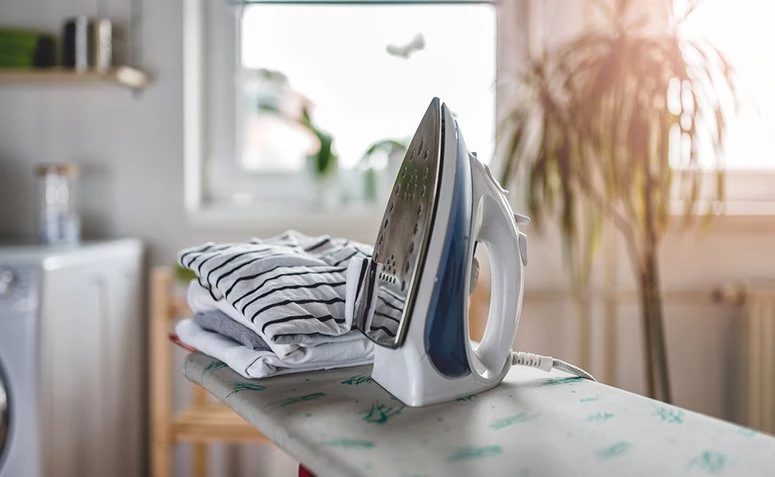
Do you iron your clothes? It won't come as a surprise if you say no, since some people don't do it because it's laborious, tiring, or because they don't know how to iron certain items. However, some occasions require you to wear a well ironed outfit. But don't despair, ironing can be a less complicated task!
That said, here are some tutorials on how to iron delicate, social, and baby clothes, among others, as well as tricks and tips to make the look even more impeccable. Turn that seemingly never-ending housework into a small effort without much delay.
How to iron badly wrinkled clothes
While you wait for the iron to get hot, you separate the clothes of each material, because each fabric requires a different way of ironing:
See_also: 80 50th birthday cake ideas to celebrate half a century of lifeStep by step
- Before ironing, check the label on the garment to set it at a suitable temperature so that it does not deteriorate;
- Then take the wrinkled clothes and stretch them out flat on the board, including sleeves and collars;
- Then spray water on the garment to soften it and make your job easier;
- Finally, gently iron the garment until it is smooth;
- Hang it on a hanger or fold it gently when it is ironed.
Be careful not to leave the iron on the garment for too long! Now that you have learned how to iron that wrinkled garment, here are the techniques to make your social clothes flawless.
How to iron social clothing
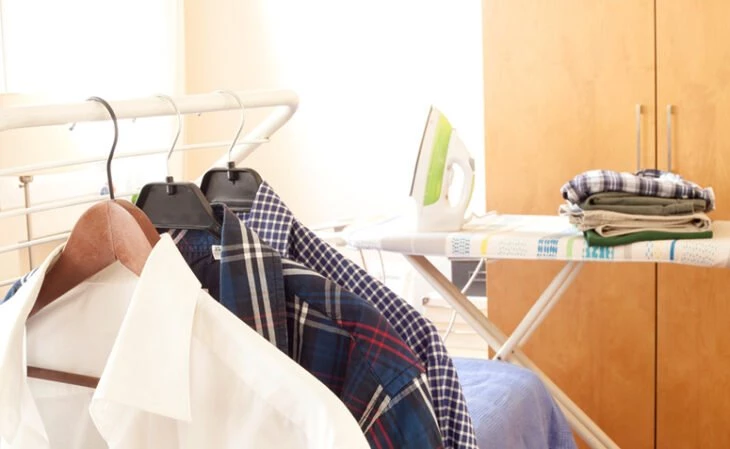
Whether it's for an event, a birthday, a wedding, or even that dreaded job interview, check out the best way to iron socially without damaging the garment:
Step by step
- Check the label on your social clothing to set the iron's temperature;
- Stretch the garment inside out on the board and spray it lightly with water to soften the fabric;
- If it is a dress shirt, start at the collar and, slowly working from the outside in, work your way down the back, sleeves, and cuffs - always from the collar down;
- Then turn to the right side and finish by going over the entire garment again;
- If it is a social dress, also put it inside out and open the skirt wide for ironing;
- Just like the social shirt, turn the dress right side out and iron some more;
- Hang it right up on a hanger so it doesn't wrinkle again.
If the garment has buttons, iron around the buttons only, because many of these types of clothes have a more delicate material that can be damaged by ironing. Here is how to iron delicate clothes!
How to iron delicate clothes
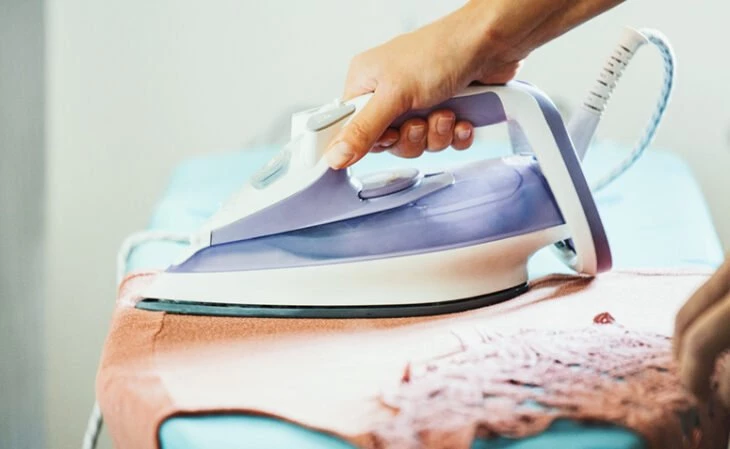
The kind of garment that most people are afraid to iron, delicate clothes need extra care. Check them out below and follow all the steps to prevent damage to the garment:
Step by step
- Set the iron's temperature according to the label on the delicate garment (in most cases, it is the lowest power you have);
- Put a cotton cloth all over the ironing board - the cotton will create a kind of barrier that will thus prevent other colors from getting through to the delicate fabric;
- Turn the fabric upside down and place another cotton cloth over the piece;
- Gently proceed with the iron without coming into direct contact with the delicate clothes;
- When done, turn right side out and hang on a hanger.
It is extremely important that the iron does not touch the fabric, so always use another white cotton fabric to prevent direct contact.
How to iron baby clothes

The heat from the iron helps remove impurities and other bacteria that can lodge in the clothing and harm the baby's health and well-being:
Step by step
- Separate the clothes according to their material;
- Then set the iron's temperature according to the iron's label;
- Use a spray of water to soften the garment item;
- Since most of them have rubber or plastic prints, iron the clothes inside out;
- Do not iron clothes that have embroidery, embellishments, or any other type of appliqué, by using an iron around it or place a cotton fabric over it and set the iron to the lowest temperature you have;
- Fold or hang the clothes as soon as they are ironed.
- Separate the T-shirts according to the fabric of each one into different blocks;
- Take the iron and set the temperature according to the garment's label;
- Stretch the T-shirt tightly over the board, as well as the sleeves and the collar;
- If the T-shirt has a print, turn it inside out for ironing - never iron over the print;
- Use a spray of water to soften the fabric;
- Iron along the length of the T-shirt, always making straight strokes until smooth;
- There you go, fold the T-shirt neatly or hang it on a hanger.
- Fill the small container of water into the steam iron - you can make use of warm water to make the job easier;
- Then plug it in and set the temperature according to the fabric you are going to iron;
- Wait until it gets hot and steam begins to come out of the opening;
- You can either iron the clothes on the board or on the hanger itself, the second option being more practical;
- Run the steam iron up and down over the garment until the desired result is achieved, without pressing on the fabric;
- When it is ready, never leave the water standing inside the iron so as not to create slime, damage the clothes or the appliance itself.
- Separate the woolen clothes from the lace ones;
- On the garment's label, check the temperature indicated to set it on the iron;
- Stretch the piece well on the board;
- Place a damp cotton cloth over the item to be ironed;
- Run the iron over the damp cloth without coming into direct contact with the clothes from top to bottom until you get the desired result;
- When ready, hang the clothes on a hanger so they don't wrinkle or fold them carefully.
Although it may seem laborious because you always have a lot of baby clothes, you should iron all the baby items. Always be careful when setting the temperature so as not to damage the garment. Now that you have learned the steps for ironing baby clothes, check out how to iron T-shirts.
How to iron shirts
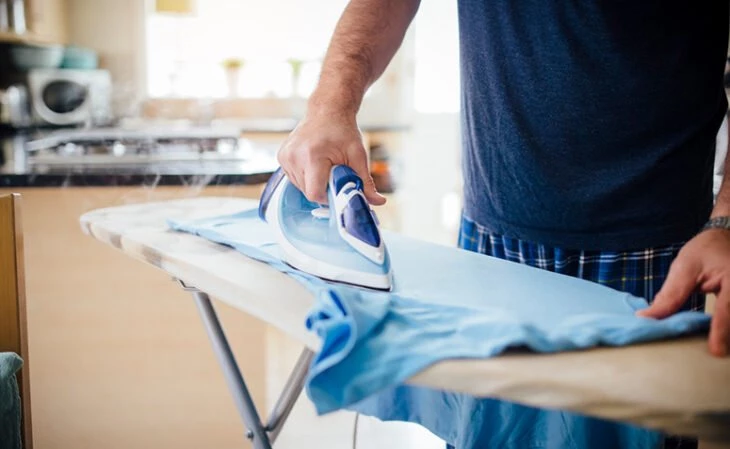
Most T-shirts are made of cotton and are therefore very easy and convenient to iron:
See_also: 70 models of modern armchairs to highlight any spaceStep by step
Now that you have learned how to iron T-shirts, here is how to iron with a steam iron.
How to iron with a steam iron
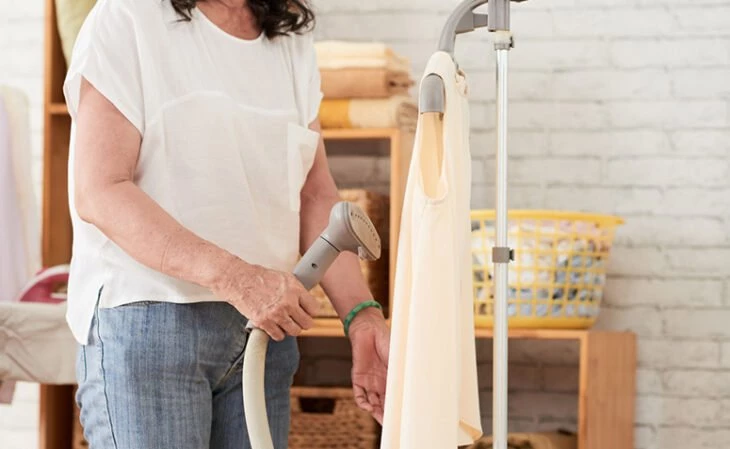
The steam iron has many advantages over the regular model. Easy, practical, and fast to handle, it gives clothes a very smooth and perfect look. Check out how to use it:
Step by step
Perfect for sanitizing curtains, bedspreads, and even upholstery, the steam iron, like the regular model, must be handled carefully so as not to come into contact with the skin and burn it.
How to iron wool or lace garments

Just like delicate clothes, woolen or lace fabrics require extra care when ironing.
Step by step
No mystery, now you know how to iron woolen or lace clothes without having to be afraid of burning or ruining them. For any type of fabric, it is always recommended to use a clean, quality iron.
Another foolproof tip is to always use a quality fabric softener when you wash your clothes. It will prevent the clothes from getting too wrinkled, as well as make ironing easier. Remember also to always leave the iron clean after use - heat the item a little and lightly wipe it with a damp cloth to eliminate any residue. With all these tips, you willno more excuses for not ironing!


